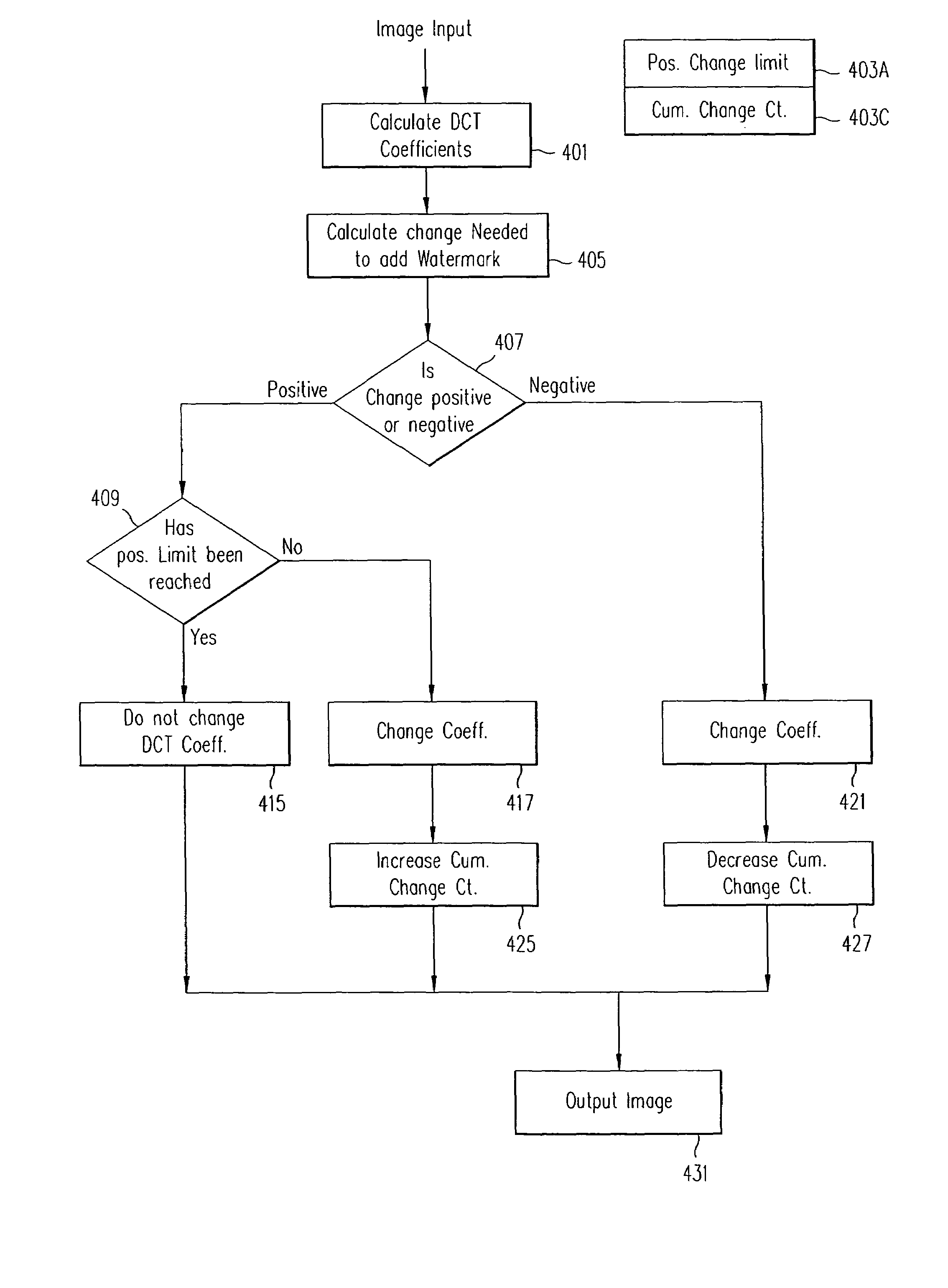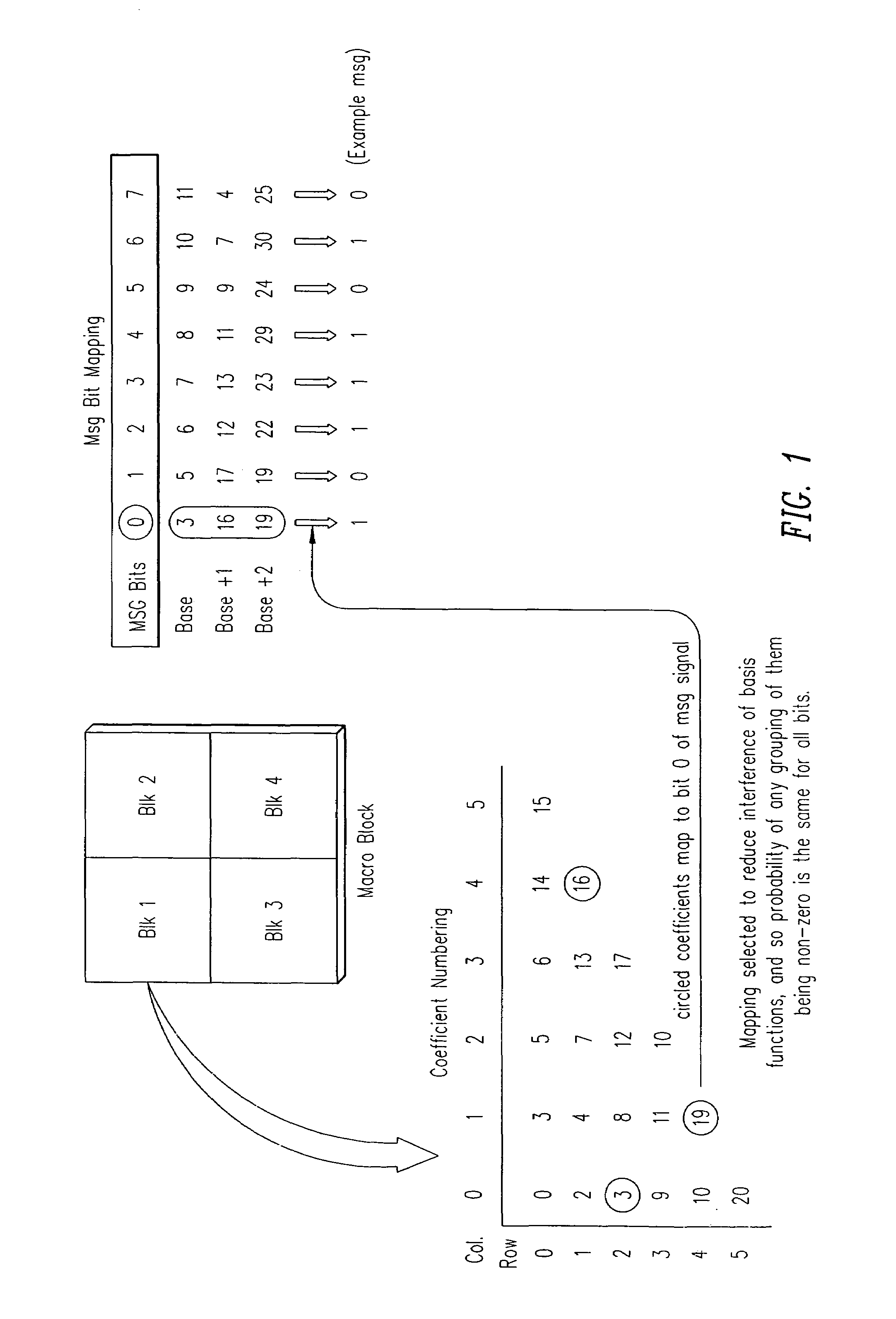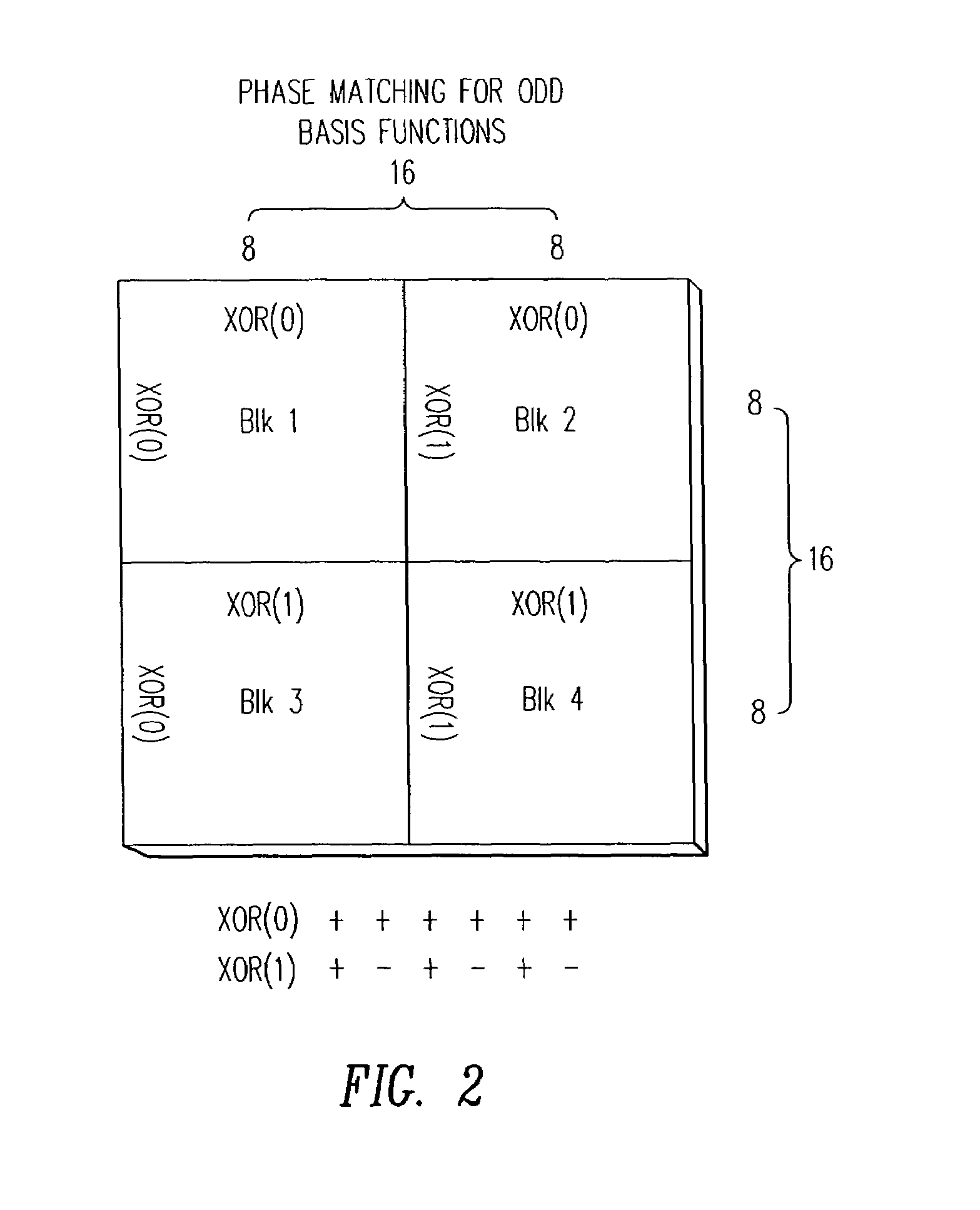Transform domain watermarking of image signals
a transformation domain and image technology, applied in the field of digital watermarking, can solve the problems of changing the bit rate, affecting the quality of image signals, and inherently degrading images stored on prior media (e.g. vhs, beta, audiotapes, etc.) to achieve the effect of protecting against piracy
- Summary
- Abstract
- Description
- Claims
- Application Information
AI Technical Summary
Benefits of technology
Problems solved by technology
Method used
Image
Examples
Embodiment Construction
[0017]The MPEG (Motion Picture Expert Group) and JPEG (Joint Photographic Expert Group) image compression techniques use a DCT (Discrete Cosine Transform) to generate a matrix of coefficients. An embodiment of the invention shown herein slightly modifies the DCT coefficients (either slightly increases or slightly decreases the value of the coefficients) so as to embed a digital watermark in the image. Such a digital watermark can later be detected by cross correlation techniques.
[0018]As illustrated in FIG. 1, the MPEG and JPEG techniques divide an image into 8 by 8 blocks of pixels. Each block of pixels is then used to generate an eight by eight block of DCT coefficients. The 8 by 8 blocks of coefficients are divided into “macro blocks”, each of which consists of four of the original blocks. This is illustrated in FIG. 2. The rows and columns of DCT coefficients in each block are numbered from top to bottom and left to right as illustrated in FIG. 1. The first row and the first col...
PUM
 Login to View More
Login to View More Abstract
Description
Claims
Application Information
 Login to View More
Login to View More - R&D
- Intellectual Property
- Life Sciences
- Materials
- Tech Scout
- Unparalleled Data Quality
- Higher Quality Content
- 60% Fewer Hallucinations
Browse by: Latest US Patents, China's latest patents, Technical Efficacy Thesaurus, Application Domain, Technology Topic, Popular Technical Reports.
© 2025 PatSnap. All rights reserved.Legal|Privacy policy|Modern Slavery Act Transparency Statement|Sitemap|About US| Contact US: help@patsnap.com



